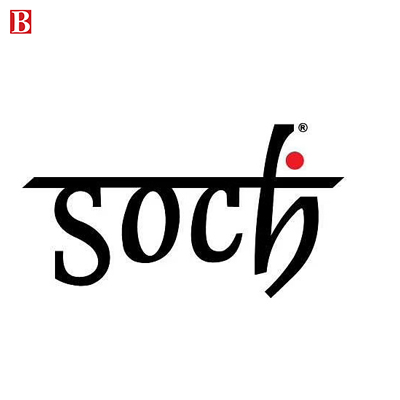The pandemic has changed shopping experience for many. People are buying products at the click of a button, and companies are looking to strengthen their online presence. Here’s how offline retail player Soch Apparels ramped up its digital business model to see 400 percent growth in its sales. The visceral thrill of shopping has drastically changed over the past few months. A decade ago, it would have been unusual for shoppers, who are keen on getting a feel of the fabric and size, to buy clothes online.

However, ecommerce has come a long way, especially after the COVID-19 pandemic. Today, brands that weren’t relying on online sales have had to either liquidate their leftover stock on ecommerce portals or risk losing customers in the new normal.
Businesses that were nimble enough to quickly build their online sales channels have survived during the COVID-19 lockdown. For ethnic wear brand Soch, the situation was not different. Despite having a strong offline presence in the country for close to two decades, it was the fashion retailer’s digital adoption that helped it see a 400 percent growth of sales in the new normal.
“Before the pandemic we were doing a small portion of our sales on Amazon and Myntra that too only liquidating inventory as our sheer focus was on offline retail. But things drastically changed in the post-pandemic world when selling online became a medium to sustain the business for the long haul.”
Bengaluru-based Soch Apparels carved out a strong place for itself in the ecommerce and D2C (direct-to-consumer) space only after the pandemic. Vinay says that Soch’s business grew between 3X and 4X right after the first wave of COVID-19. Although the retail company’s business saw a slump for a period of two to three months between March and June 2020, sales picked up in the following months.
Going digital
Vinay says that after the pandemic induced lockdowns, he listed Soch on Flipkart, Ajio, Tata Cliq, and more, to not miss out on any online customer. “Online presence is now a necessity for survival. Though it doesn’t mean that there’s no future of the offline market — it is evergreen; however, one shouldn’t deny the merits of having selling online, this is what we have realised lately,” he says.
Live commerce integration on its website is another pivot that Soch aims to implement in the next few months. From planning, buying, merchandising, supply chain management, operations to marketing and digital, Soch is working on strategic changes across its ecommerce and omni-channel play to drive double digital revenue growth by FY22-23. According to Vinay, the post-pandemic would want to shop online for ease but would also look for an offline shopping experience. The next step for the company, therefore, is adding more features through live commerce.
The genesis
Although Soch began its journey in 2003, Vinay is a third-generation entrepreneur as his grandfather and father were in the textile business since 1951.
“My father set up a readymade garment store, a multi brand outlet, in Commercial Street, Bengaluru after a few years of partition. He ran the same store for around 10-12 years after which when my father stepped in, they started expanding. By 1995, we had around 20 stores by the name ‘Favourite Shop,” Vinay recalls.
As Vinay’s grandfather and father were already in the garments business, over the time they launched their in-house labels which he says were garnering good demand.
“The business had hit the sweet spot in the early 2000s. We observed that people were more keen than ever in buying branded products and shopping from the mall or complexes had become a trend, we wanted to tap the opportunity and hence started digging in building our own brand and we launched Soch in 2003,” Vinay tells.
Since the early 2000s, the journey for Soch has been upwards with the number of offline stores multiplying each year. From 2010 to 2021, Soch expanded to 138 retail stores across Karnataka, Andhra Pradesh, Telangana, parts of Delhi, and more with its ethnic wear collection that has sarees, lehengas, kurtas, dresses, fabrics, among others.
Challenges and the competition
Challenges often turn into opportunities but one of the biggest struggles is keeping patience with the ups and downs that happen in the course of a business. COVID-19 is a perfect example of this, says Vinay.
He adds that when competition grows, so do the opportunities for a brand grow and create a niche. Falling in the likes of BIBA, Aurelia, Global Desi, W, Vinay says that all the brands, including Soch, have carved out a separate niche and everyone is doing well.
The way forward
Expansion is the way forward for Vinay as he says that he wants to saturate Soch’s southern India market before entering deep into North India. “We would launch 35 stores in the same year if we are going North. There’s no point in launching a handful of stores in the region that already has a vast variety of great ethnic brands,” he says.
Soch also expects to deepen its digital presence with the implementation of live commerce on its website.














